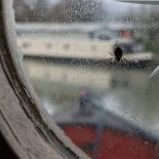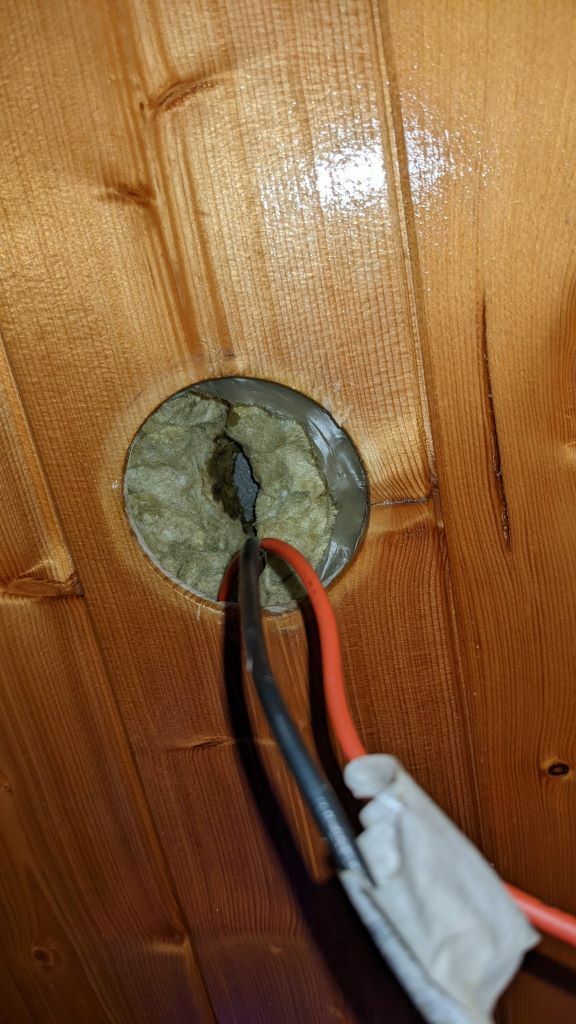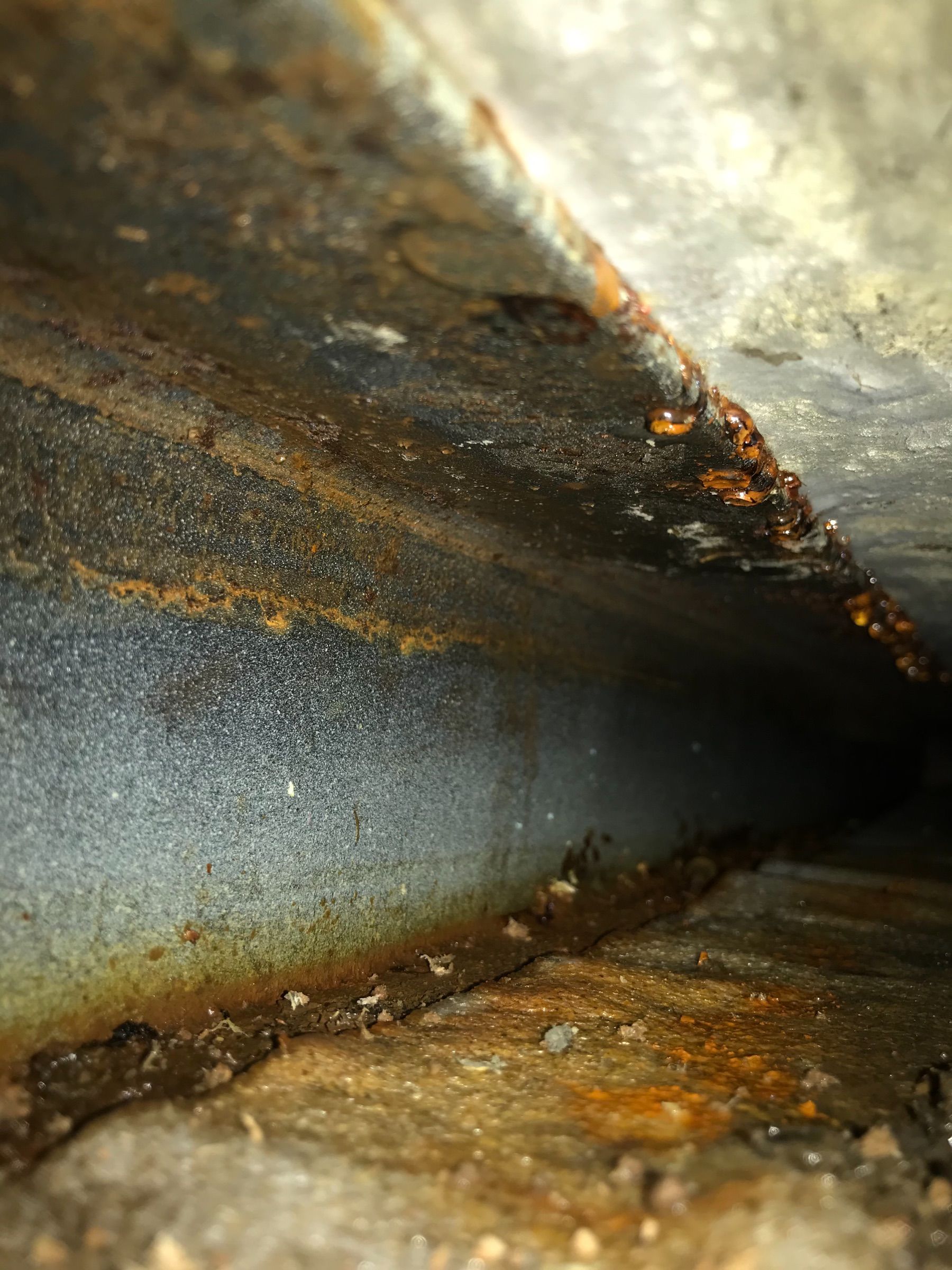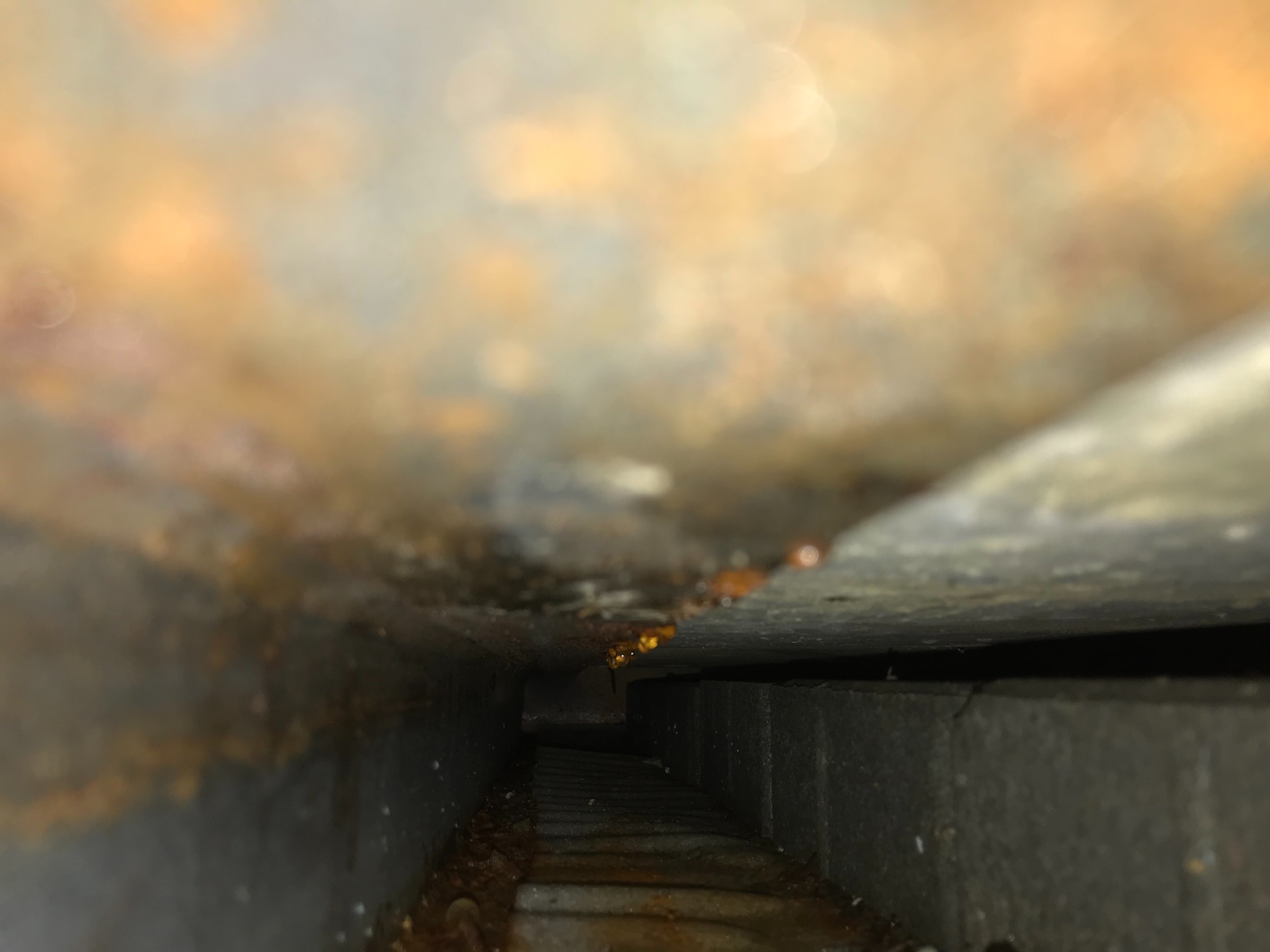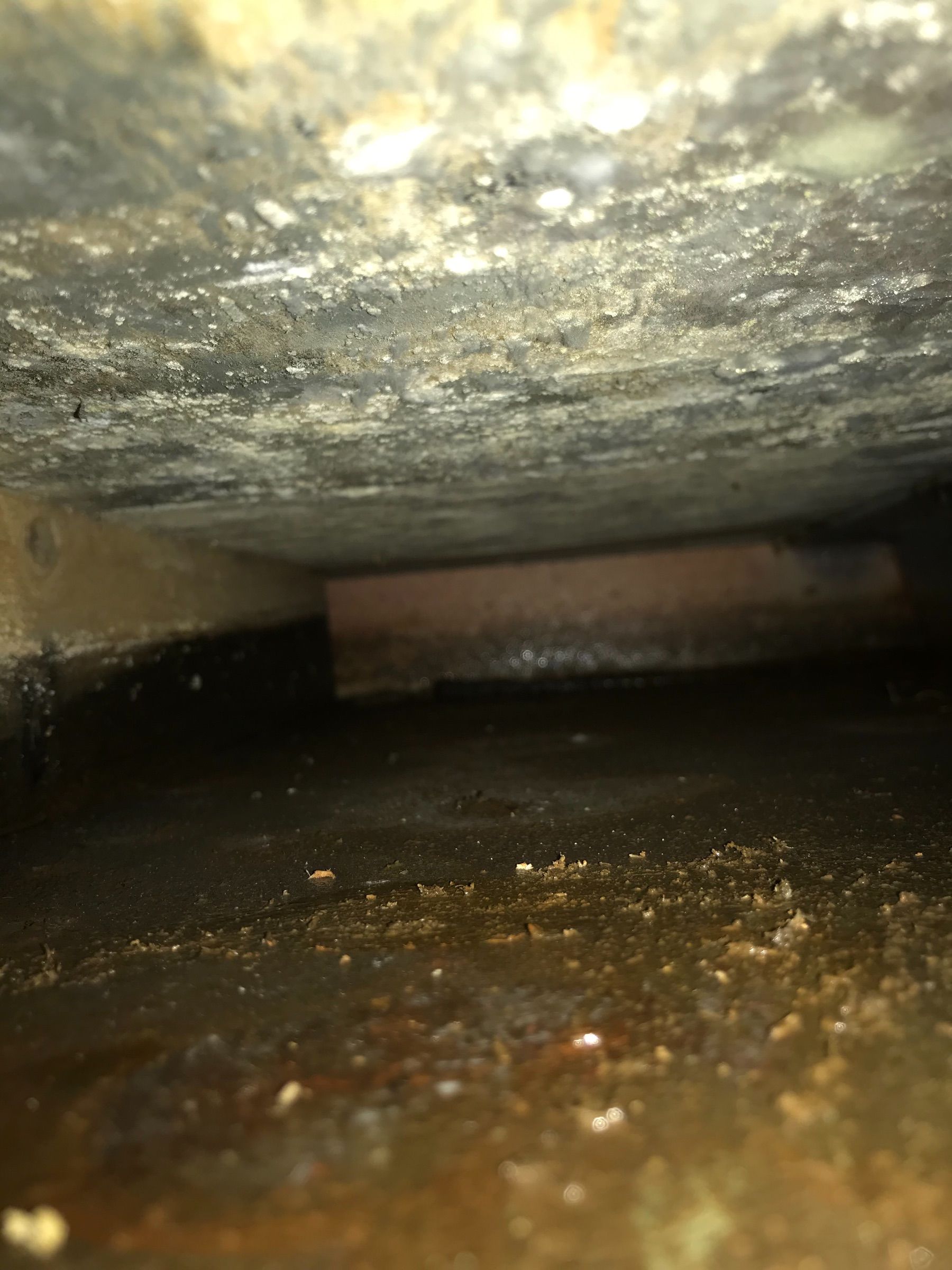Search the Community
Showing results for tags 'condensation'.
-
Just wondering on the best insulation on the inside of the hull at about the waterline above where the hull plate meets the sides? I'm getting a lot of condensation on the inside of the hull in the cabin near to the stern, so I'm thinking about putting insulation onto the bare steel. Something like Rockwool glued on with bitumen paint?
-
key point - what do I clad the underside of the gunwhale with? So, I’ve been re-doing my boat. Initially took out everything from the bedroom at the back (furthest end from the fire) which included a large wardrobe. Had to replace the insulation and cladding where it had been. Replaced the polystyrene like for like but foamed it in to give better seal. I’ve also added some polystyrene to the gap in the gunwhale, and then put mdf up. sadly, within weeks, the mdf is getting soggy and mouldy. So I guess condensation is forming on the walls, running down and dripping in the gunwhales. The old material put there seemed to be a veneered mdf and was stained heavily, but never dripped. My flooring is now dark where the drips have accumulated and pooled. Other than a dehumidifier, I’m not sure how to stop the condensation being this bad? This bit of the boat isn’t well heated. and what better material to fix to the underside of the gunwhale is? thanks a bunch!
- 10 replies
-
- damp
- condensation
-
(and 2 more)
Tagged with:
-
Today's annoyance (if there could be only one!) is finding my new pack of table salt has gone soggy cloggy inside. I replaced the last one because it did that, and vowed to shut the little twizzler on the top instead of leaving it open. I keep some silica gel in that cupboard but it's a regular usage cupboard. Anyone have tips please? Other than to reduce my salt intake 😛 I'm currently casting around for a way to hold it at 50°C for a while, to see if that helps, but maybe the answer is to buy another and wrap it in tinfoil and parcel tape. Then keep the twizzly lid shut too. The frozen olive oil is something I was expecting. Stand it in front of the heater and it's fine again, no big deal... but it does bring me to thinking about where I would put a gently (electrically) heated cupboard. Down low makes sense for the benefit of heat released, but sharing roof & cabin wall makes sense for convenience.
- 43 replies
-
- humidity
- galley cabinets
-
(and 3 more)
Tagged with:
-
Hello Canalworld! Firstly, thank you so much for the wealth of knowledge and advice that I've received from you all over the past couple years, and all without ever having had to make a post. I knew the day would come though. I've owned my 55ft narrowboat built in 1991 for two years now. She was built by R&D, and had a survey on the hull in 2019. The thinnest part of the baseplate that came up with the ultrasound was 8.8mm on what was originally 10mm steel. Myself and my wife have been living on board full time for almost two years now. There's always something to do in terms of maintenance, and I've kept on top of it so far. We love the practical hand on approach to life. Recently, I'd noticed some white mold had been growing on some of the plywood that makes up the under-bed storage, where it is sat near to the black water toilet waste tank. This is a large (I have no idea of the capacity) grey plastic tank that sits under the bed, cut into the wooden floor and extending below the wall and into the bathroom, with a drop through toilet installed. Upon further inspection, I discovered that the ply of the floor had become weak and brittle around the tank, as if it had been exposed to lots of damp and then having dried over the summer. After having ripped some of this weakened wood away, I've discovered just how rusty the floor has become underneath. Large flakes of on average 6mm thick rust can be easily pulled away from the floor all around the tank. I'm aware of this apparently only being 0.6mm of steel lost, or a tenth of the thickness of the rust. How accurate is this however? And would this have been counted as good steel during the ultrasonic survey, or are they pretty accurate in just measuring the solid steel? It appears that there is a thin rubbery coating on top of the rust. I guess this is old treatment/coating that seems to have done more harm than good. The moisture appears to have gotten underneath and even been trapped by it, which has caused the rust to bubble up with the coating still on top. This looked quite dramatic and worrying when it was first revealed. My suspicion is that the black water tank is causing condensation in the winter. The tank is not insulated, and only had a single sheet of thin polystyrene placed, not secured, on top of it. This had began to smell, I assume from the damp and mold, and has now been removed. I am (mentally) prepared to scrape back and treat the area with Vactan, having done a similar job on the rusty welldeck. However, I'm of course worried about putting a hole in the floor. I've heard it from both sides: "It's always at least 10x worse than it looks, so get in there with the scraper and grinder" Vs "I put my finger straight through the floor of my boat and tickled a fish" Essentially, I'm looking to insulate the black water tank, so as to stop further condensation. What would be the best way of doing this? I assume that I'm going to have to move the tank anyway to get to the rust below and treat that. Afterwards, should I wrap it in something? Try to coat the entire thing in spray foam? What about the bottom? Fill the gap between the floor and the tank with foam? I have a big pot of Vactan, but what else should I put down on top of that, if anything? And ultimately, would I be wise to wait until I can have her pulled out of the water and then scrape back all the rust, or will I be safe to go for it whilst she's still floating? I've been hoping to apply fresh blacking early next summer, but I don't want to have to wait until then to fix the problem, especially going through another winter of condensation building up. I also don't want to leave it to get worse for any longer than I have too, but I'm also not made or money (otherwise I'd be in dry dock already). And in the worst case, any recommended dry docks between Tring and Northampton? I shall attempt to upload some small videos that I have of the problem and be back to update. Here's a screenshot showing underneath the tank. The grey at the top left is the tank, which is sat on the steel girder that runs across the floor (do these have a name?). You can seen the moisture on there. This photo does not show the full extent of the rust. Thank you for reading my life story. Edit: I've uploaded three short videos showing what it looks like under the floor and the tank. https://streamable.com/82wcmo https://streamable.com/5lx2dx https://streamable.com/lz5kip
- 10 replies
-
- waste tank
- condensation
-
(and 1 more)
Tagged with:
-
I'm going to replace the wooden frame before putting up the insulation. What can I use to seal the wood to the hull to eliminate the air gap?
-
Hello All, I'm a prospective boat buyer that is very close to making my first offer on a boat that my wife and I really like a great deal. However I have come across what I think could be a problem and wanted to know how best to rectify it and what might be the costs. The boat's cabin is lined with polystyrene and I think that it is causing a good deal of condensation as warm air gets around the polystyrene and comes into contact with the steel. The current owner keeps mentioning condensation and that it needs to be mopped up occasionally from the bilges at the stern of the boat. Anyway, the impression I'm getting from him is that condensation could be a bit of an issue. I know it is present on a good deal of boats but it is something I really would prefer to live without. It could be a deal breaker for me which is a real shame, as after looking for a while it seemed that this boat was 'the one'. I think the only thing that would give me peace of mind was if the whole boat was re-lined with spray foam but I'm guessing that would mean completely stripping the boat out and starting again..? I'm not sure. The boat is beautifully panelled with 9mm cherry ply and oak beams and is fully fitted with a characterful bathroom and kitchen, no bedroom to speak of just an open-plan saloon/bedroom and of course an engine room and boatman's cabin at the stern. I can't think of any other way to sort out this problem but if anybody on these forums knows an alternative, please do let me know. Having to remove all the furniture, fittings and panelling to spray foam, then putting everything back again would be quite an undertaking I imagine and would negate a purchase, unless the vendor dropped his price a great deal. Any advice is gratefully received. Thank you. PB
- 26 replies
-
- Polystyrene
- lining
-
(and 2 more)
Tagged with:
-
Hi All, Anyone out there got any advice on getting a small to medium size dehumidifier which is not too power hungry on our batteries?? we have an inverter by the way... we just want to use it for the bedroom at the cold end of our 63 foot NB...
- 20 replies
-
- humidity
- condensation
-
(and 2 more)
Tagged with:
-
Hi All, We have been thinking about fitting some of that cheap film that you can attach to window frames and then make taut with the use of a (12v) hair drier. Do any of you have experience with this? I've seen it used in a house, but the main issue I envisage on a boat is how to stick it securely to the wooden window frames. We want to use this on most - but not all - windows to reduce condensation and increase heat insulation. Any thoughts??? Cheers!
- 39 replies
-
My thinking of how a narrowboat should be is that an MHRV is essential equipment for live-aboard, but it brings one large question (below) for the BSS. What does it do? Mechanical = fans: Suck out the warm, stale, humid air... from the kitchen / shower. Suck in cold, fresh, dry air from outside, and try to do this in a balanced way so you're not pressurising the place. Heat Recovery (also Energy Recovery in hot places with aircon) = put a heat exchanger in with these fans: Use the outgoing air to warm up the incoming air. There are filters on both inputs to the heat exchanger, else it will clog up. Ventilation: send fresh and warm air to the opposite end of the boat. Heat recovery is never 100% efficient but can produce great savings. It also isn't useful as a heat source - you still need a heater somewhere. The heat recovery is also not meaningful or useful if there is no heating. Any MHRV is undermined by draughts, so houses with it fitted tend to be pretty much air-tight - let me know if you want a link to some youtube guys taking that to extremes. This is in the context of a live-aboard boat which will get some heavy-handed refitting after I find it. It will be a huge project, please wish me luck! My question is "Will having active ventilation remove the need for passive ventilation (ie. holes everywhere), which are normally required for BSS?" Or if it doesn't by itself, what else would need adding? If it has LPG / fuel gas on board I'll be removing that as soon as I have an alternative. I don't like it, it's too boomy for me. Solid fuel burning will be needed, but I want a balanced flue not a front-feed stove. That's a story for another day, but I also dislike having a potential carbon monoxide source in my box. I'm relying on the boat having plenty of electricity, which is also a story for another day. MHRVs last popped up in these old posts - Any thoughts appreciated!
- 48 replies
-
- mhrv
- ventilation
-
(and 3 more)
Tagged with:
-
Hi all, Looking for some advice on the best way to proceed here. One of my downlights has stopped working due to water damage (and another light in the same section of boat also stopped). I live aboard, so keep the boat warm mostly, and dry too. The issue is in the bedroom, so I cant help but breath and whatnot so I suppose I'm making it worse! Chatting on Facebook groups suggests that even this small hole below will cause water to accumulate on the exposed steel: So far I've placed a new plastic sheet between the hole and the wooden celling to stop more moisture getting in. Do you think I could dry things out with my vacuum? Maybe suck the water out? And then if I can get it all dried, do you think a foam insulation filler would help to seal off the metal? Something like this? https://www.robertdyas.co.uk/polycell-expanding-foam-500ml Thanks!
-
Hi. Can you help with a wet under floor please? 2008 65 foot narrow boat. The cabin bilge is always wet. I suck out about 5 litres per month. There was a small leak in the bathtoom 2 months ago but it’s been fixed. Still seeing some wicking up the base of the wooden bulkheads so I drilled some inspection holes. Photos attached. The whole floor is like this. Could this be condensation? Do I need to force ventilate under the floor? Having been searching for a leak for a month and not found conclusive evidence of one anywhere I’m at a loss. Your advice very gratefully received. Thanks.
-
We have been on our boat now for a couple of weeks, got the stove going, doors open to circulate the air around. We are having to wipe the frames of the window and the windows at least 2 - 3 times a day. Then again first thing in the morning, the condensation is running. Not having lived on a narrowboat before, is this normal? Is this something that we are going to have to live with? Its a new boat so nothing is damp (mattress/clothes/curtains etc) but I don't want to get to the point where these things do get damp. Has anyone solved this problem on their boat? Has anyone any suggestions? Should I be doing something else?
-
Hi all, Our boat (52" widebeam) gets really bad condensation, to the point where the water is dripping down the walls. The walls are wooden and have started to swell. When we had our windows upgraded to double glazing (old windows still available for sale btw!) in order to fix this problem, we found that the walls are not insulated in any way. What I'm asking is that a) does anyone know a reliable boat builder who could rip out all the walls and thoroughly insulate them, and b ) is this definitely going to solve the problem? Thank you!
- 29 replies
-
- insulation
- boat insulation
-
(and 3 more)
Tagged with:
-
Our windows on our NB are getting bit grubby and sometimes leak so we are thinking about replacing them. The obvious choice would be double glazing, and then i began to think. The existing windows attract condensation and need wiping dry. To be honest we can sometimes control this with a bit of air management. But and here is the question, is condensation on windows a bad thing as the windows are acting similar to a dehumidifier and help remove the damp air with the occasional wipe of a cloth. If we went for the double glazing, my way of thinking makes me think the damp air will condensate elsewhere on the boat and possibly not be visible until the damage begins. Any comments and experience of double glazing much appreciated.
- 9 replies
-
- condensation
- double glazing
-
(and 1 more)
Tagged with:




